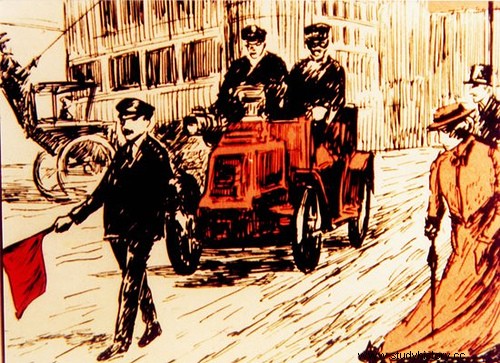In the second half of the 1800s, cars began to appear in Europe. At first, powered by steam engines, and later by various liquid fuels (in 1885 the first motor vehicle was built by internal combustion engine with gasoline). Logically, and along with the growing use of automobiles, some inconveniences appeared… the road safety of pedestrians compared to heavy ones – up to 12 tons – and fast – 16 km/h – locomotives.
The previous legislation, from 1861, which established these limitations (maximum vehicle weight of 12 tons and a speed limit of 16 km/h) had become obsolete . So, in 1865 The Locomotive Act was enacted , also called the red flag , which set these limitations:
- Set speed limits of 6 km/h in the country and 3 km/h in cities.
- Establishes that self-propelled vehicles must be accompanied by a team of three people :the driver, a fireman and a man with a red flag who had to walk 60 meters in front of each vehicle. The man with the red flag or flashlight warned pedestrians, horseback riders, and horse-drawn carts of the proximity of a self-propelled machine.

That law was a blow to the young automobile industry, in favor of the traditional horse-drawn carriage and the incipient railway.
Sources and image:The red flag Act, Bring back the 1865 Locomotive Act,
